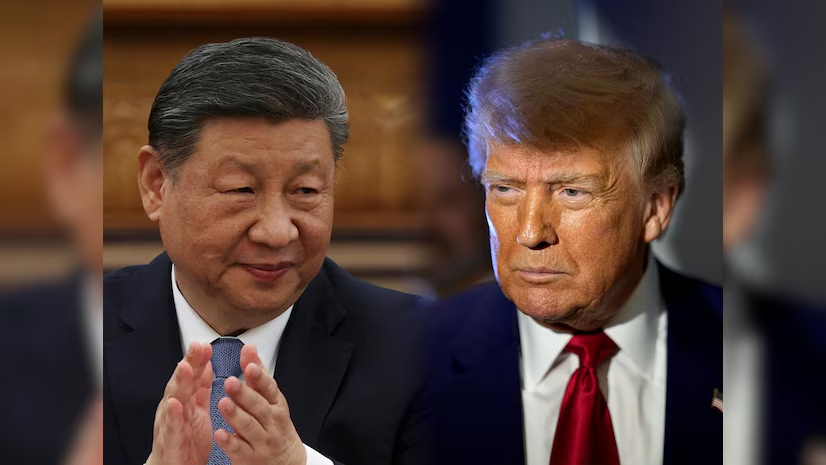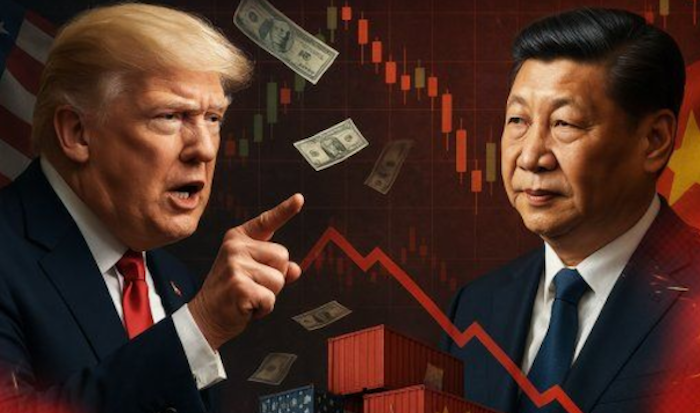In a bold move that has sent shockwaves through global markets, China announced on April 11, 2025, that it will raise tariffs on all U.S. goods to 125%, up from 84%. This decision comes as a direct response to President Donald Trump’s recent tariff hikes on Chinese imports, which now total 145%. The escalating trade war between the world’s two largest economies is raising fears of a global economic slowdown, disrupting supply chains, and increasing costs for consumers and businesses alike. This article explores the reasons behind China’s tariff increase, its potential impacts, and what it means for U.S.-China relations under Trump’s policies.

Why China Raised Tariffs
China’s decision to impose 125% tariffs on U.S. goods is a retaliatory measure against Trump’s aggressive trade policies. On April 9, 2025, Trump raised tariffs on Chinese imports to 125%, which, combined with a 20% tariff tied to fentanyl production, brought the total U.S. tariff rate on China to 145%. This followed a series of tit-for-tat tariff increases that began earlier in the year. According to China’s Finance Ministry, the U.S. tariffs “seriously violate international economic and trade rules” and amount to “unilateral bullying.” Beijing has called Trump’s policies a “joke” and stated that further U.S. tariff hikes will be ignored, as they make trade between the two nations economically unfeasible.
China’s Commerce Ministry also announced plans to file a lawsuit with the World Trade Organization (WTO), arguing that the U.S. is responsible for the global economic “turbulence” caused by these tariffs. Chinese President Xi Jinping, in a meeting with Spanish Prime Minister Pedro Sánchez, emphasized that “there are no winners in a tariff war” and called for cooperation with other nations to counter U.S. policies. This suggests China is seeking to build alliances with countries like those in the European Union to offset the impact of the trade war.
The Timeline of Escalation
The U.S.-China trade war, which began in 2018 during Trump’s first term, has seen a dramatic escalation in 2025. Here’s a brief timeline of recent events:
- February-March 2025: Trump imposed a 20% tariff on Chinese goods, citing issues like fentanyl production and unfair trade practices.
- April 2, 2025: Trump raised tariffs by an additional 34%, bringing the total to 54% on Chinese imports.
- April 9, 2025: After China retaliated with an 84% tariff on U.S. goods, Trump increased tariffs to 104%, then to 125% (totaling 145% with the fentanyl-related tariff).
- April 11, 2025: China responded by raising tariffs on U.S. goods to 125%, effective April 12, and declared it would not match further U.S. increases.
This rapid back-and-forth has made trade between the U.S. and China increasingly unsustainable, with analysts warning that tariffs above 35% eliminate profit margins for exporters on both sides.

Economic Impacts on the U.S. and China
The escalating tariffs are already affecting both economies. In the U.S., the tariffs are expected to raise consumer prices, particularly for goods like electronics, clothing, and automobiles, which rely heavily on Chinese manufacturing. According to the Tax Foundation, Trump’s tariffs could amount to an average tax increase of $1,200 per U.S. household in 2025. Businesses like Amazon are also feeling the heat, with CEO Andy Jassy noting that third-party sellers may pass on higher costs to consumers.
In China, Goldman Sachs lowered its GDP growth forecast to 4% for 2025, below Beijing’s target of 5%, citing the impact of U.S. tariffs. While Chinese exports to the U.S. account for only 3% of China’s GDP, they support millions of jobs, with estimates suggesting 10-20 million workers are involved in U.S.-bound export businesses. China has also imposed restrictions on exports like rare earth minerals, critical for technology manufacturing, as a countermeasure.
Global markets have been volatile, with the U.S. S&P 500 dropping 3.5% on April 10 and the U.S. dollar index hitting a three-year low. Meanwhile, U.S. Treasury yields have risen sharply, signaling investor concerns about the stability of the U.S. economy.
Global Reactions and Market Turmoil
The trade war is not just a U.S.-China issue; it’s affecting the global economy. European markets, including Germany’s DAX and France’s CAC, saw declines after China’s tariff announcement, while Asian markets like Japan’s Nikkei and South Korea’s Kospi also experienced losses. However, some markets, like Taiwan’s, saw gains as investors speculated that countries like Vietnam and Taiwan could benefit from redirected trade.
Trump’s decision to pause tariffs on other countries for 90 days (excluding China, Canada, and Mexico) has provided temporary relief to global markets. Over 75 countries have expressed interest in trade negotiations with the U.S., with Vietnam and Taiwan taking steps to avoid transshipping Chinese goods to dodge U.S. tariffs. However, the ongoing U.S.-China conflict continues to fuel uncertainty, with analysts warning of a potential global recession.
What’s Next for U.S.-China Relations?
Despite the heated rhetoric, both sides have left the door open for negotiations. China’s Commerce Ministry has stated it is open to dialogue based on “mutual respect,” while Trump has expressed optimism about a potential deal, praising Xi Jinping as a “smart man” who “loves his country.” However, no direct talks between Trump and Xi have occurred since Trump’s inauguration in January 2025, and previous meetings between U.S. and Chinese officials have yielded little progress.
Analysts are skeptical about a quick resolution. The deep mistrust between the two nations, combined with geopolitical tensions over issues like technology exports and Taiwan, makes a comprehensive trade deal unlikely in the near term. Some experts, like Shi Yinhong from Renmin University, predict that U.S.-China trade could become “almost nonexistent” if tariffs remain at current levels.
Implications for Consumers and Businesses
For consumers, the trade war means higher prices and potential shortages of goods. Everyday items like smartphones, clothing, and household appliances could become more expensive as companies pass on tariff costs. Small businesses, particularly those reliant on Chinese manufacturing, may struggle to absorb these costs, while larger corporations are already exploring alternative supply chains in countries like Vietnam and Mexico.
Businesses face a tough road ahead. The uncertainty caused by Trump’s on-again, off-again tariff policies has made it difficult for companies to plan. For example, CarMax, a U.S. car dealership chain, recently stated it could no longer provide business goal timeframes due to economic uncertainty. Meanwhile, China’s restrictions on rare earth minerals and Hollywood films add another layer of complexity for U.S. companies operating in China.

Can Diplomacy Resolve the Crisis?
While both sides have expressed willingness to negotiate, the path to a resolution is unclear. Trump’s tariffs aim to bring manufacturing back to the U.S., but critics argue this could take years and may not offset the immediate economic pain. China, on the other hand, is focusing on building alliances with Europe and Southeast Asia to reduce its reliance on the U.S. market. Xi’s recent meetings with leaders from Spain, Vietnam, and Malaysia signal a strategic pivot to strengthen China’s global trade position.
For diplomacy to work, both sides would need to make significant concessions. Trump has hinted that tariffs on China could “come down substantially” but not to zero, while China has signaled it may not respond to further U.S. tariff hikes, focusing instead on countermeasures like export controls. The WTO lawsuit and China’s outreach to other nations suggest Beijing is preparing for a prolonged conflict.
Conclusion
The U.S.-China trade war has reached a critical point with China’s decision to raise tariffs to 125% in response to Trump’s 145% tariffs. This escalation threatens to disrupt global trade, increase consumer prices, and push the world closer to a recession. While both nations have left room for dialogue, the deep-rooted tensions and lack of direct communication between leaders make a quick resolution unlikely. As businesses and consumers brace for the fallout, the world watches to see whether diplomacy can prevail or if the trade war will continue to reshape the global economy.
For more details on the economic impacts, check out The New York Times and Reuters for ongoing coverage of the U.S.-China trade war. Stay informed as this story develops, and let us know your thoughts on how these tariffs might affect you.
Best For U :- Google’s AI Dominance: Decades of Groundwork Give It an Edge Over Apple’s Emerging Efforts






